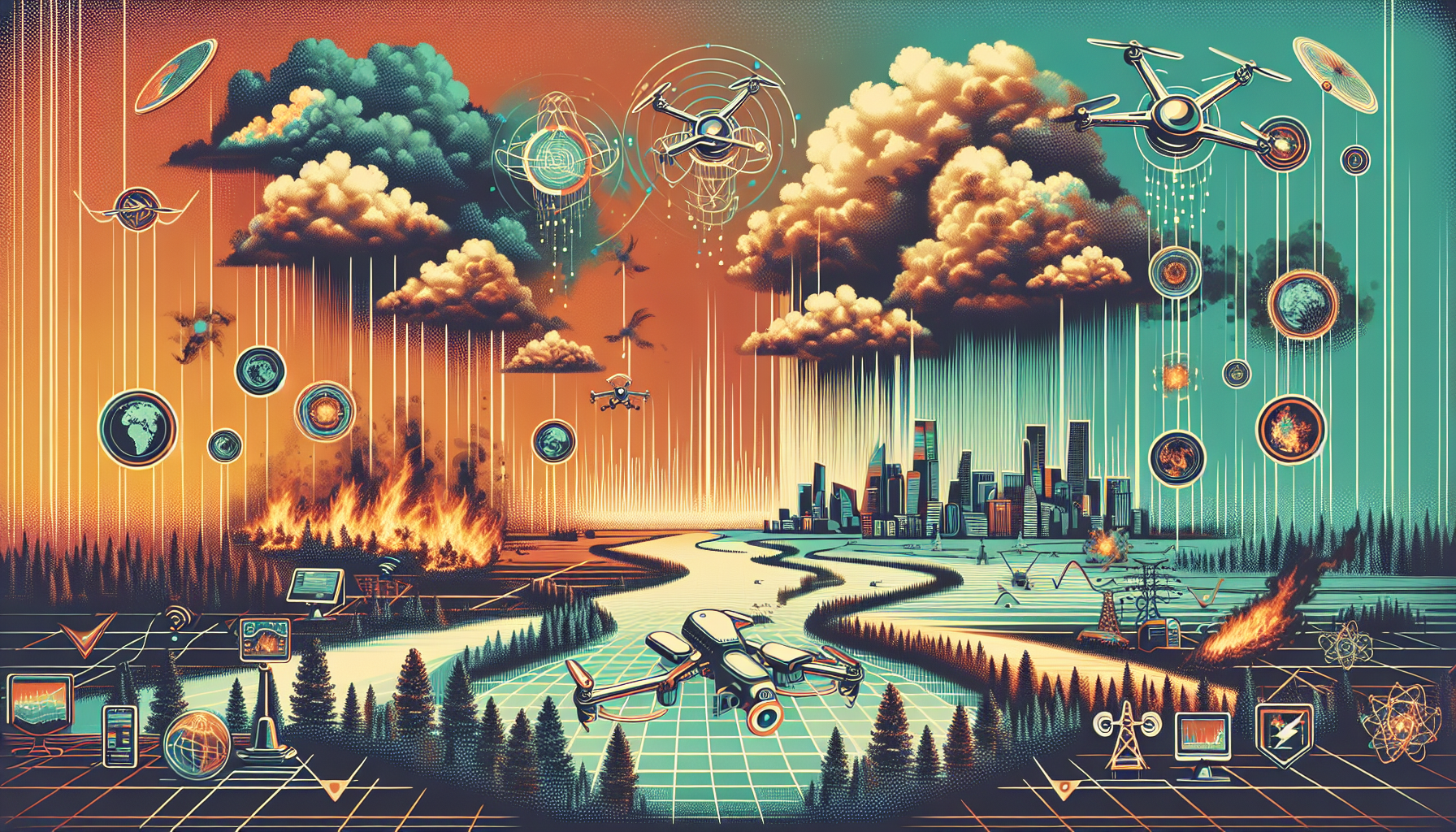Imagine a future where we are always one step ahead of extreme weather, where technology guides our every move during a storm, wildfire, or heatwave. This is rapidly becoming a reality with the rise of AI in weather forecasting and emergency response. These advanced, AI-driven systems are bringing about a new age of preparation and protection against nature’s most unpredictable forces.
Precision Like Never Before
Artificial Intelligence is doing extraordinary things with weather forecasts. By gathering and sorting through massive amounts of data—from satellites in space to ground-based weather stations—AI algorithms can see patterns far beyond human capabilities. One stellar example is Google DeepMind’s GraphCast model, trained on nearly four decades of weather records. It predicts weather conditions up to 10 days in advance, showing accuracy levels unimaginable a few years ago.
Another pioneer, Climavision, is harnessing AI to refine its predictive abilities dramatically. Using extensive historical data as a foundation, Climavision’s Horizon AI models have boosted global forecasting precision by 30%. Even more impressively, they’ve doubled the accuracy for targeted local forecasts, equipping communities with critical information to better prepare for incoming severe weather.
Real-Time Insights for Critical Decisions
AI doesn’t just forecast the weather; it actively engages with real-time data to provide invaluable insights during emergencies. Constantly processing live data from sources like Doppler radar and social media, these systems allow emergency teams to take swift, informed actions.
Consider how HQE Systems’ SiSA software uses real-time environmental monitoring to catch early signals of wildfires. Through continuous analysis of temperature, humidity, and wind, AI can alert firefighting units before a minor flare-up becomes a devastating inferno. Similarly, AI models scrutinizing real-time data from various sources improve tornado predictions, giving people more crucial time to find safety.
Predicting Disasters Before They Strike
AI technologies don’t stop at improving day-to-day weather forecasts. They delve deeper, predicting natural calamities like hurricanes, earthquakes, and floods. For instance, an AI system in Tanzania uses insights from historical records and current data to anticipate extreme conditions, such as floods and heatwaves. This system enhances preparation and response, supporting local governments and citizens in taking necessary preventive measures.
Powers of Learning and Language
Machine Learning (ML) is transforming how we manage disasters. By processing and interpreting vast data troves, ML detects patterns crucial for predicting events like earthquakes—an undertaking the US Geological Survey is exploring with promising results.
Furthermore, Natural Language Processing (NLP) arms emergency services with real-time communication analysis. By studying calls, social media chatter, and news reports, NLP flags essential information, empowering teams with timely insights. IBM’s Watson exemplifies this, offering strategic recommendations during crises through its NLP capabilities.
Guarding Against Heatwaves
As heatwaves become more common and intense, AI steps in to avert their worst impacts. By monitoring relevant environmental conditions, AI systems identify potential events early on, prompting public safety measures like opening cooling shelters and issuing health advisories. Such proactive steps can considerably reduce heatwave-related health risks.
Challenges and the Path Forward
Though promising, the journey with AI in extreme weather response presents hurdles. Issues like data biases, high computational requirements, and the necessity for diverse data sources challenge AI’s potential. Building systems that are transparent and understandable remains crucial for fostering trust and maximizing AI’s role in emergency readiness.
A New Dawn in Emergency Response
AI-driven emergency systems are revolutionizing our approach to extreme weather, improving forecast accuracy while expediting response times and decision-making. As technology advances, AI’s role in emergency management only deepens, offering innovative solutions to some of the world’s most pressing challenges. By embracing AI, we can better prepare, respond, and ultimately save lives in the face of nature’s fierce unpredictability.

Leave a Reply